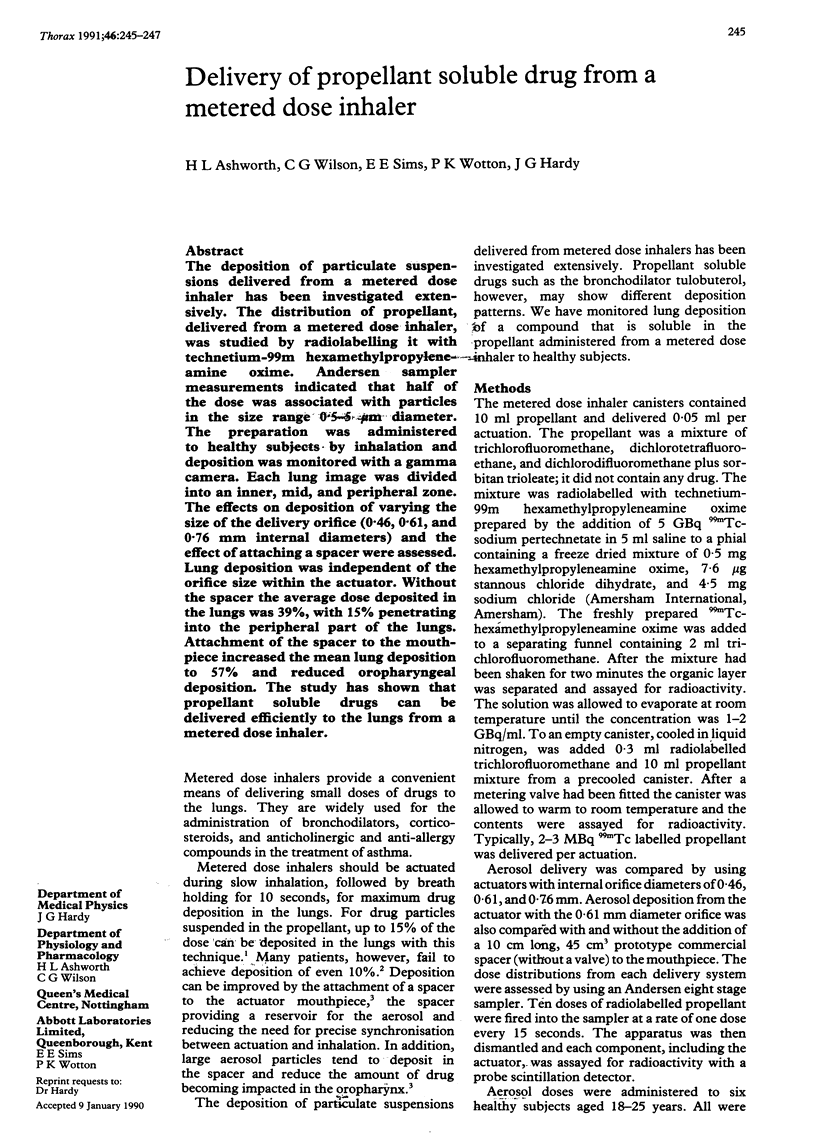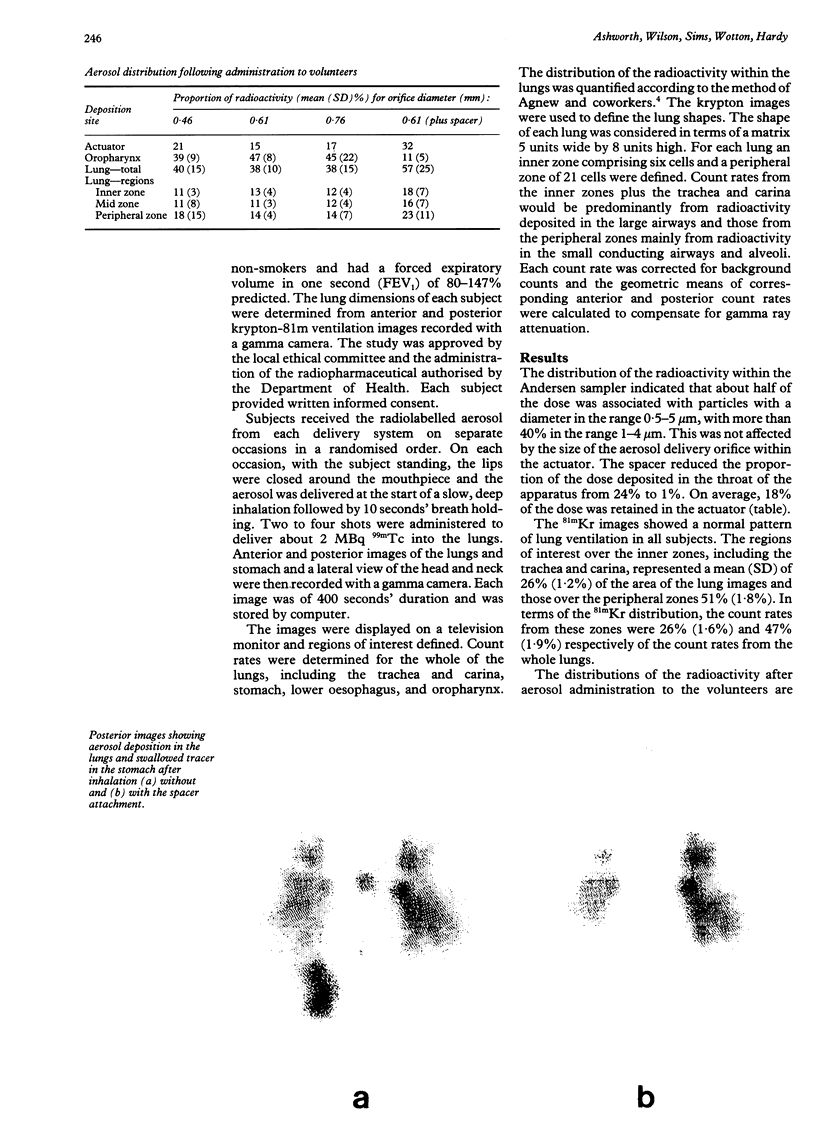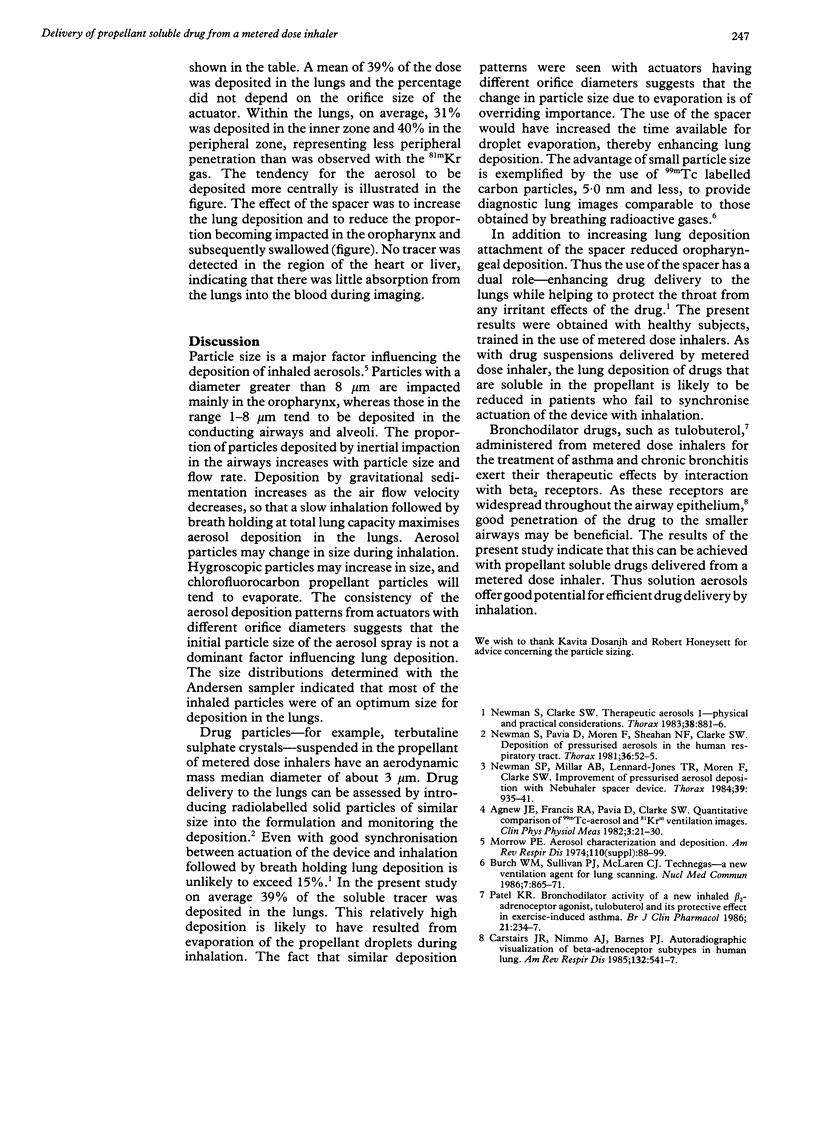Abstract
The deposition of particulate suspensions delivered from a metered dose inhaler has been investigated extensively. The distribution of propellant, delivered from a metered dose inhaler, was studied by radiolabelling it with technetium-99m hexamethylpropyleneamine oxime. Andersen sampler measurements indicated that half of the dose was associated with particles in the size range 0.5-5 microns diameter. The preparation was administered to healthy subjects by inhalation and deposition was monitored with a gamma camera. Each lung image was divided into an inner, mid, and peripheral zone. The effects on deposition of varying the size of the delivery orifice (0.46, 0.61, and 0.76 mm internal diameters) and the effect of attaching a spacer were assessed. Lung deposition was independent of the orifice size within the actuator. Without the spacer the average dose deposited in the lungs was 39%, with 15% penetrating into the peripheral part of the lungs. Attachment of the spacer to the mouth-piece increased the mean lung deposition to 57% and reduced oropharyngeal deposition. The study has shown that propellant soluble drugs can be delivered efficiently to the lungs from a metered dose inhaler.
Full text
PDF


Images in this article
Selected References
These references are in PubMed. This may not be the complete list of references from this article.
- Agnew J. E., Francis R. A., Pavia D., Clarke S. W. Quantitative comparison of 99Tcm-aerosol and 81Krm ventilation images. Clin Phys Physiol Meas. 1982 Feb;3(1):21–30. doi: 10.1088/0143-0815/3/1/002. [DOI] [PubMed] [Google Scholar]
- Burch W. M., Sullivan P. J., McLaren C. J. Technegas--a new ventilation agent for lung scanning. Nucl Med Commun. 1986 Dec;7(12):865–871. doi: 10.1097/00006231-198612000-00003. [DOI] [PubMed] [Google Scholar]
- Carstairs J. R., Nimmo A. J., Barnes P. J. Autoradiographic visualization of beta-adrenoceptor subtypes in human lung. Am Rev Respir Dis. 1985 Sep;132(3):541–547. doi: 10.1164/arrd.1985.132.3.541. [DOI] [PubMed] [Google Scholar]
- Morrow P. E. Conference on the scientific basis of respiratory therapy. Aerosol therapy. Aerosol characterization and deposition. Am Rev Respir Dis. 1974 Dec;110(6 Pt 2):88–99. doi: 10.1164/arrd.1974.110.6P2.88. [DOI] [PubMed] [Google Scholar]
- Newman S. P., Clarke S. W. Therapeutic aerosols 1--physical and practical considerations. Thorax. 1983 Dec;38(12):881–886. doi: 10.1136/thx.38.12.881. [DOI] [PMC free article] [PubMed] [Google Scholar]
- Newman S. P., Millar A. B., Lennard-Jones T. R., Morén F., Clarke S. W. Improvement of pressurised aerosol deposition with Nebuhaler spacer device. Thorax. 1984 Dec;39(12):935–941. doi: 10.1136/thx.39.12.935. [DOI] [PMC free article] [PubMed] [Google Scholar]
- Newman S. P., Pavia D., Morén F., Sheahan N. F., Clarke S. W. Deposition of pressurised aerosols in the human respiratory tract. Thorax. 1981 Jan;36(1):52–55. doi: 10.1136/thx.36.1.52. [DOI] [PMC free article] [PubMed] [Google Scholar]
- Patel K. R. Bronchodilator activity of a new inhaled beta 2-adrenoceptor agonist, tulobuterol and its protective effect in exercise-induced asthma. Br J Clin Pharmacol. 1986 Feb;21(2):234–237. doi: 10.1111/j.1365-2125.1986.tb05182.x. [DOI] [PMC free article] [PubMed] [Google Scholar]



